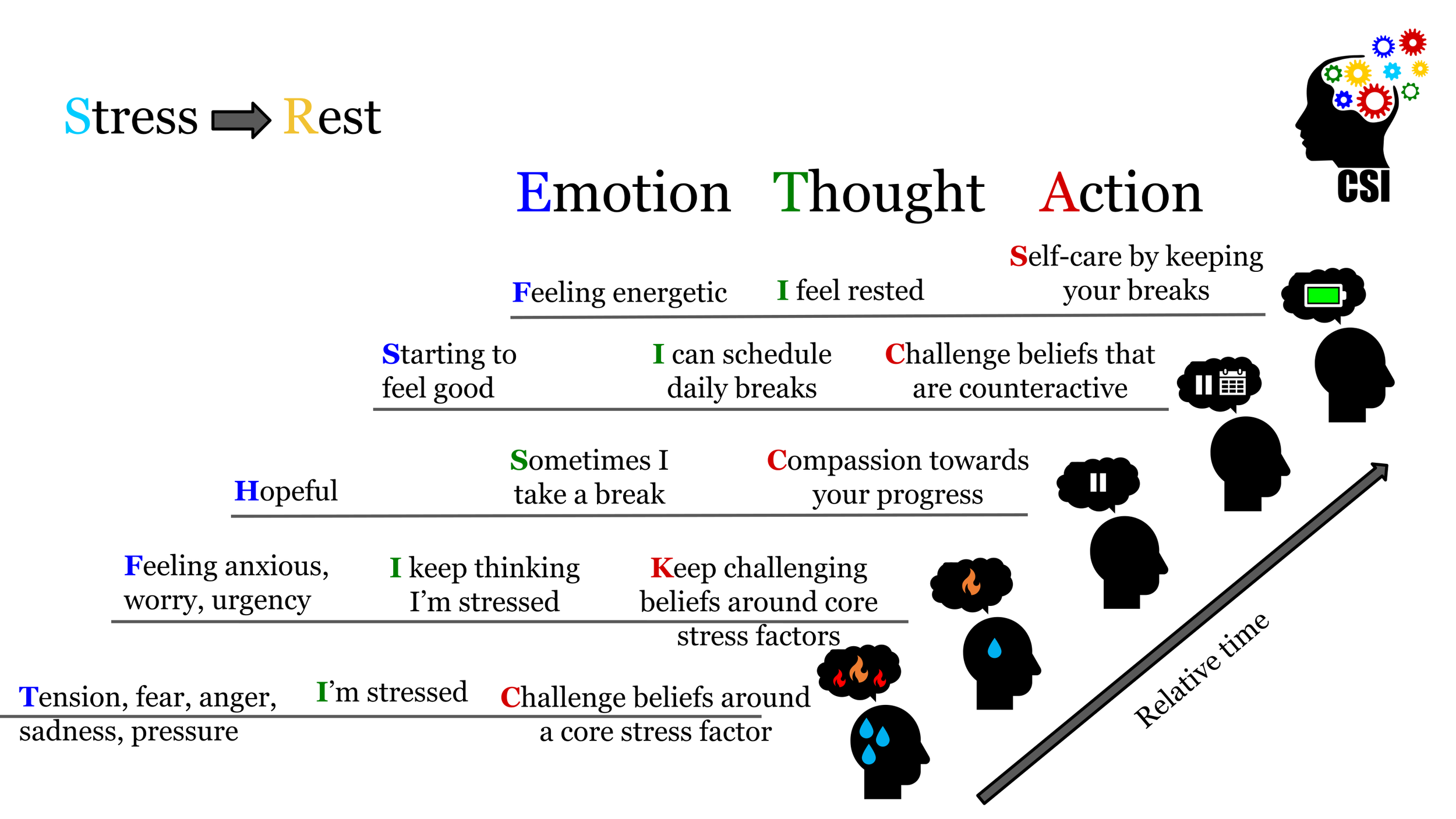The Coaching in Science Initiative
ETA-Ladders
If we genuinely believe we are enough, we won't care that much if someone (or our own thoughts) tells us we aren't. But if we genuinely do not believe we are enough, we feel ashamed if someone (or our own thoughts) implies it. The good news is that we are capable of changing what thoughts we believe in. It is important to note that giant leaps are not helpful here. That will not get us from one mental position to another; rather, we will stumble and get stuck. By calibrating the magnitude of our emotional jumps between thoughts and actions, we can create Emotion-Thought-Action (ETA) - Ladders that can get us across.
Each next step on a ETA-ladder should leave you feeling a little better, or at least less bad, i.e., more neutral on the topic; practice thinking that thought, and challenge yourself with actions until it feels natural to think that new thought.
Our brains are really good at finding evidence for the thoughts we think. When we have thought something for a long time, it often becomes internalized as a belief, and we have collected lots of "evidence" to support this belief, i.e., confirmation bias. We can use this brain feature to internalize new beliefs that we have chosen for ourselves and that are helpful, by practicing thinking the new thought, and taking actions to challenge our soon-to-be old belief and/or assumptions.
Recall discussing something with another human who has the opposite opinion on the topic. Being forceful, demanding a big and quick change does not shift the other person's belief but makes it stronger. Your own brain works similarly, thus small shifts are needed to make changes in one's belief, which will go on to affect your actions. Using self-coaching, you can write your own ETA-ladder to shift a belief you currently hold, from something mentally holding you back - to something that will help you move forward. On this page, we share some examples.
From feeling like a Failure to Succeeding
The ETA-ladder ‘from Failure to Succeeding’ illustrates, and gives examples of emotions-thoughts-actions steps from feeling like a Failure to feeling like you are Succeeding. It starts with accepting our current emotions, thoughts and behaviors. Then continues to note when such emotions and thoughts occur in the mind - proceeding with actions to challenge the underlying beliefs and assumptions that gives fuel to these emotions and thoughts. The thought “I keep thinking I’m a failure” is less emotionally loaded then “I’m a failure”, it feels less bad and more neutral. Once we start challenging the “I’m a failure” thought, we will see that there are many small things we succeed with everyday, and noting all of these adds up! Over time, this will help us see that the thought “I’m a failure” is not ultimately true.
When we start practicing the thought that we sometimes succeed with things, our brain will start looking for associations of this in our lives. By actively thinking about the sentence "Sometimes I succeed with things" every day, we help our brain focus back on the task of collecting evidence for this. In addition, we can plan actions to take that will shift our current belief and/or assumption. With time, we will collect a lot of evidence and a new belief will be formed within us. In this way, we can climb out of old beliefs that do not serve us and into new helpful beliefs that improve our lives and well-being.
Below we showcase a collection of ETA-ladders:





